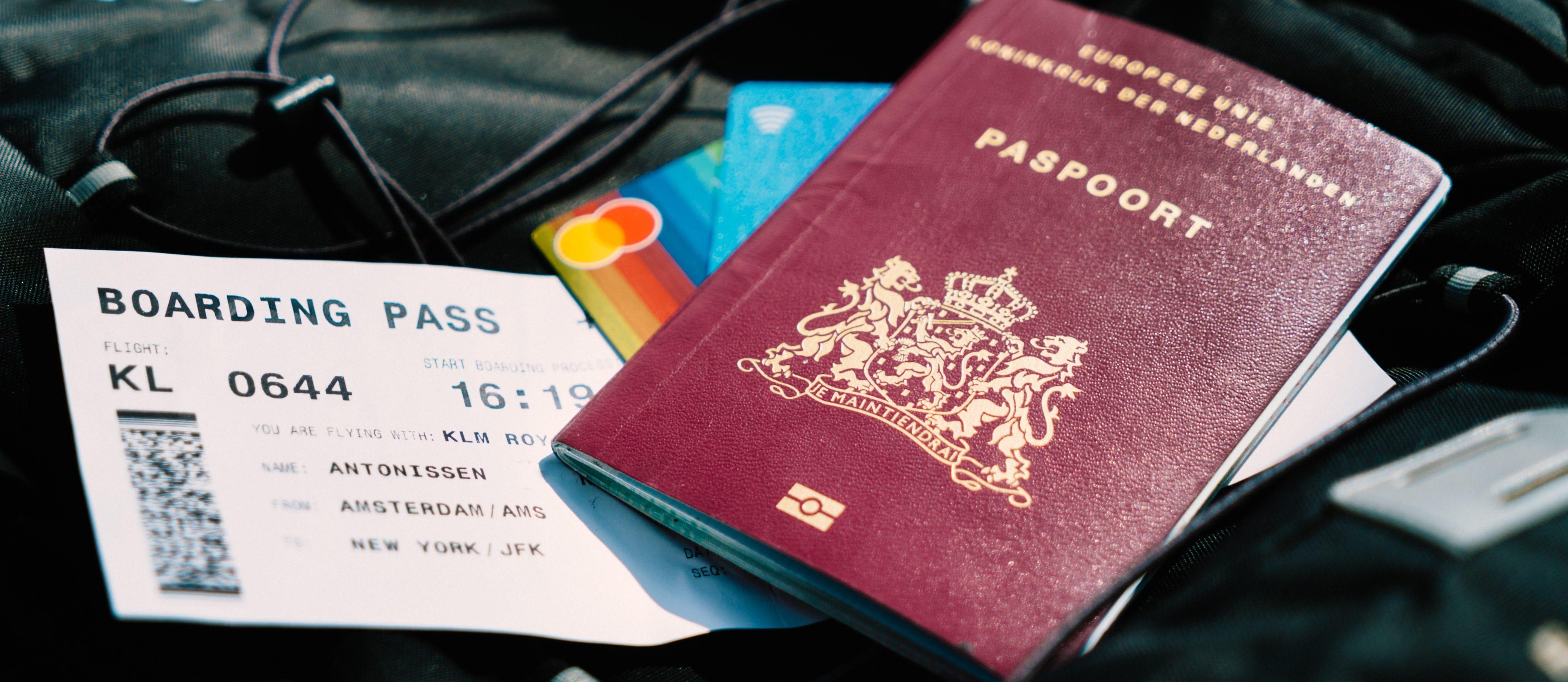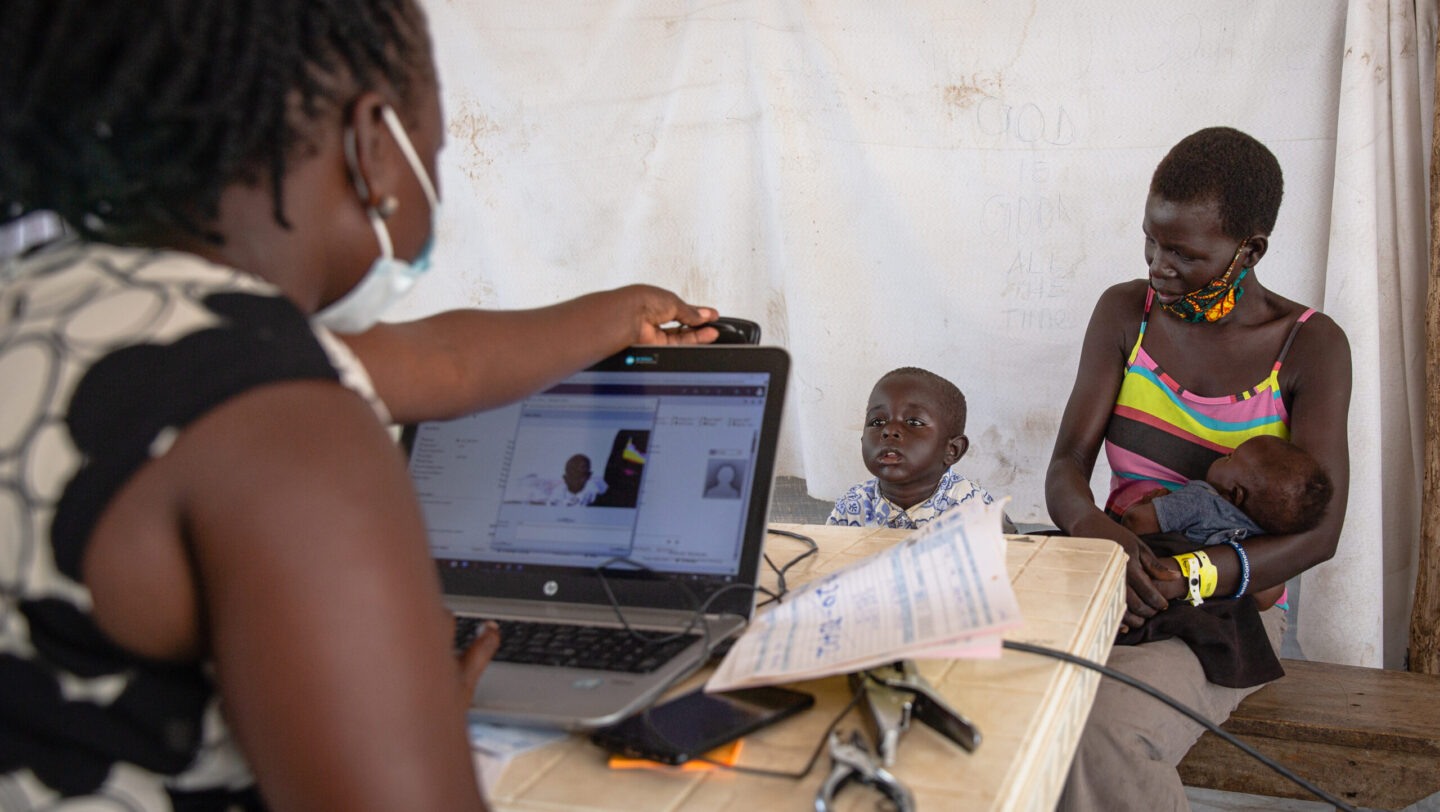

Nov 08, 2022
In 1414, King Henry V of England issued the first ever passport. Known as the ‘safe conduct’ document, it was given to English travellers to prove their identity abroad and gain safe passage. This simple passport was just a piece of paper with the King’s signature on it, but the basic premise of the document remains unchanged 600 years later.
In 1803, Napoleon introduced internal ID cards for employees in his empire, making it easier for employers to trust and hire people. Economic growth boomed, other countries followed suit.
Cut to World War II and the introduction of National Registration as a tool to record how many people were eligible for national service.
Since then, verified identity is entirely institutionalised and has become a cornerstone of modern life. We have driver’s licences, passports, national insurance numbers, email addresses, and a hundred different tags of our personal unique information. They’re essential to the ecosystem of identity that we’ve created: we keep dangerous drivers off the roads, terrorists off our airlines, and children out of bars. But the way we map identity is changing.
So, take a walk with me into the speculative future. Ten years from now, you’re in the security queue at the airport, on your way back from your holiday. Except, instead of lining up to show your passport to a human being, you’re waiting to scan the identity barcode you keep on your phone at the biometric gate. Your passport has been digitised, along with your vaccine records, travel history and visas. When you land, you order an Uber that you confirm by blinking twice at your front camera, and as you’re on your way home, your Alexa independently starts prepping for your return. She recognises your location tied to your device, and has access to the data from your Uber trip, so she starts turning on the heating when you’re just the right distance away.
If you think about it, it’s not that far off from now. Most of our phones have facial recognition or fingerprint software, banks ask us to confirm our biometrics by blinking twice in frame, and Google sends you a text message the second you log in from a device that isn’t already linked to you. In this age of digitalisation, it’s logical that we’re finding smarter and safer ways to store and prove our identity.
Not only is it convenient, our future proof of identity has the potential to decentralise information, standardise it across the board, and increase global access to the identity ecosystem.

Deepa Mahajan, James Manyika and Olivia White, McKinsey
Consider the effort that goes into recruiting new team members, volunteers, and committee members. DBS checks. ID checks. Right to work checks. Banking checks. Criminal record checks. Say the word ‘safeguarding’ to any charity employee and they’ll probably visibly shudder at the thought of the steps, stage gates and bureaucracy required to prove someone is who they say they are and fit for the role you are recruiting them for. Imagine truly digitising this process, making it fit for the 21st century?
Then consider modern attempts at voter suppression in the USA. And it’s not just the States. Globally, there’s almost a billion people who are without any proof of identity, which is a massive contributor to poverty cycles and marginalisation. Out of the remaining people, over half can’t use whatever documents they have in the identification ecosystem. In the UK, about 1 in 4 people don’t have access to traditional ID. Without a passport or equivalent proof, you can’t register to vote, you often can’t open a bank account, lease a flat, get a national insurance number, get a SIM card, enrol in school, etc.
New (digital) approaches to proof of identity could help lower the barriers to entry and provide a serious boost for inclusion and equality. They could speed up safeguarding, whilst making it more robust, giving charities access to wider pools of volunteers.
The technology is already here. We now need advocates and voices to push government and tech companies to implement it ethically and safely, for the benefit of all, and not just the few who can afford to access.

The first phase we’re likely to see is stronger links between our physical and digital identities. As we’re spending more and more time online, having an online identity is becoming more important. In person, we have a collection of things that prove who we are, like a passport, national insurance number, birth certificate, bank card, or even house keys. Online, who we are is made up of a combination of email addresses, usernames, profiles and passwords, some of which are completely separate (how many of us have multiple gmail accounts, for work and personal use?).
Securing our digital identity is a lot harder than securing our physical one. In real life, keep a close eye on your passport, or block your bank card if you lose it. Online, there’s just too many pathways to stealing someone else’s information, especially as most of us are just beginning to understand the basics of the internet in the first place.
Linking the physical and digital could cancel out this danger. Using markers of physical identity to verify every online account would centralise our data and make it more secure to outsiders. Two-step verification is already a form of this, where we’re tracking digital identity by using a signal from our physical identity (a unique phone number). In the coming years, we’re likely to see this concept applied to a much larger number of accounts, and begin to see the centralisation of all this data.
One way it’s already impacting business is by streamlining the hiring process. Right to Work checks are becoming easier to complete, as are DBS checks. Most of them are being carried out through Identity Document Validation Technology via a digital ID app, with many finance and gaming institutions adopting this process already. And the technology could be applied to much more. For example, the UK government has been trying to pass legislation about age verification on porn websites, but haven’t been able to break ground. Could this technology pave the way?


In fact, within fifteen years from now you can probably say goodbye to your paper passport or driver's licence. With the technology that supports biometrics getting better every day, it’s only a matter of time before we do away with physical documents entirely. We’re already seeing contactless facial scanners at airports that allow pre-screened travellers through without the physical document. In all likelihood, within the next decade, we’ll have unique identification records linked to our digital identity built on the blockchain.

One of the really promising developments we’re seeing comes in the form of Proof of Humanity, a concept launched by blockchain protocol Kleros and non-profit the Democracy Earth Foundation. It essentially looks like an online phonebook, where people can verify and add their citizenship, degrees, experience or skills. Once you sign up and verify your identity through a video and a recommendation from a current member, you get added to the secure and decentralised registry, and begin accruing its native cryptocurrency, UBI. The system could lead to a number of benefits, like fairer access to voting and fewer bots and misinformation accounts online.
The technology has the potential to deliver huge social impact, but is still held back by a few key issues. For example, people could submit multiple profiles by changing their facial hair or makeup, or vulnerable groups could be pushed out of the registry (similarly, on Reddit, hateful groups can get users banned by reporting fake offences en masse). But most importantly, technology like this thrives through recognition. The more people use it, the more likely it is to become an officially recognised proof of identity, and the more people will be aware of and able to benefit from it.

Similar to Proof of Humanity are Soul-Bound Tokens (SBTs). They’re an idea floated by blockchain founder and crypto-currency-as-democracy posterboy, Vitalik Buterin, who wants to use them to make a decentralised society where people have a permanent record of their merits and skills stored in private blockchain wallets. SBTs leverage the same principles as NFTs, but, unlike NFTs, you wouldn’t be able to trade SBTs. Ownership is tied to physical identity; no one could steal or buy it from you. In theory, SBTs would look like a verified, online CV. It could show a verified online version of your degree, or proof from your previous employers, or even writing samples and portfolios.
Similar to Proof of Humanity, SBTs have the potential to make proof of identity far more attainable for (hopefully) billions of people worldwide. On the other hand, it sounds a little bit like China’s social credit system, which could punish citizens for unproductive behaviour. There’s some thinking left to be done about how much control you have over your own data (can you burn an SBT, or omit a bad working experience?), but expect to see more about this in the coming years.

Having multiple nationalities and passports is a luxury that most people are either born into or spend significant time and money on achieving. These passports let their holder have more mobility, more job opportunities, and more security. For a number of political reasons, this isn’t likely to change any time soon. What will become more accessible, however, is the job opportunity aspect of dual nationality.
Ever since remote work has become normalised post-COVID, we’re seeing the rise of e-residency programmes. E-residency is a way of applying for entirely digital, remote residency in a foreign country. Pioneered by Estonia, which has a highly advanced digital infrastructure, entrepreneurs can set up a business abroad without setting a foot outside their own home. Every aspect of the process, including filing taxes, which is done through an app in under five minutes, is streamlined digitally. Right to work checks, residency permits, business filings; there’s an app for that.
E-residency has made Estonia into a unicorn-stable. Not only are they able to import bright minds from abroad and profit from their work, they’re allowing a new generation of remote workers to broaden their horizons. In the future, expect this type of technology to be used to allow migrants to start working whilst in the middle of their visa process, hire fully-remote staff from anywhere in the world, or inspire a new wave of startups.

Estonia is actually using this infrastructure in partnership with the UNHCR to help transform humanitarian assistance and protection. Their technology makes it easier for displaced, stateless, and unhoused individuals to access secure digital identity. From asylum applications to job hunting to digital cash assistance, this new way of proving digital identity essentially allows refugees an easier route to asylum and income. It’s also more dignified than a lot of assistance programmes we have right now. Instead of getting the bulk of their income from charity and donations, having a digital identity allows migrants to take ownership of their personal finances and overall lives.
Think about the implications that digital ID could have for integration and community-building of refugees. Think about how this same technology could be applied to people from underprivileged areas or people who are unhoused.
The way proof of identity is developing isn’t just about streamlining an airport experience or a right to rent check. The technology has the potential to create fairer hiring practices and opportunities, give a political voice to people who historically haven’t had one, and award refugees with more dignity and self-sovereignty. Whilst the technology exists, many of these ideas are still speculative. So what next?
You’re the experts in the needs of your beneficiaries. Now is the time to start collaborating with web3 ventures, tech companies and governments to ensure that all users are being considered, not just the vocal minority. How can we design in access for all?
Whilst some of these use cases might still be speculative, change is rapid. Innovate on your safeguarding approaches and policies to both implement and existing and future-proof for next technologies.
The UK asylum and refugee system is broken, with people waiting years, not months, for the processing of their application. During this time they are unable to work, relying on government and charity support. Digital proofs of identity could radically change this and give people the freedom to work and support themselves, and governments the reassurance and safeguarding required.